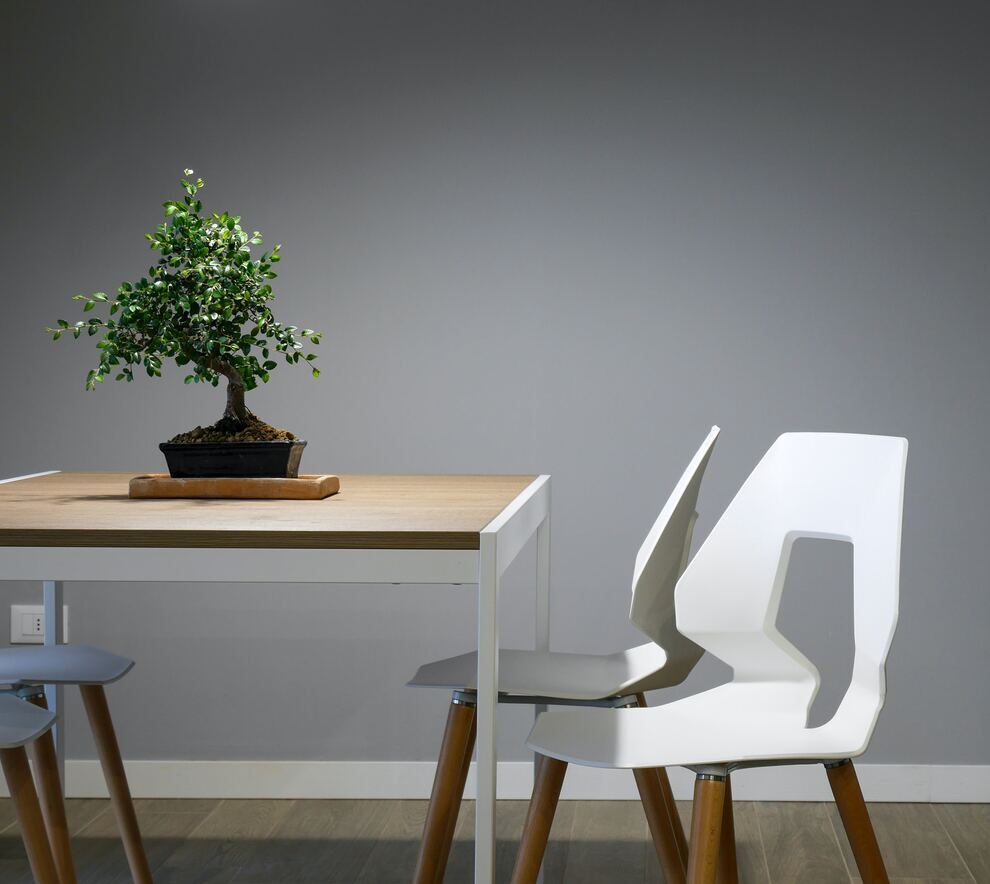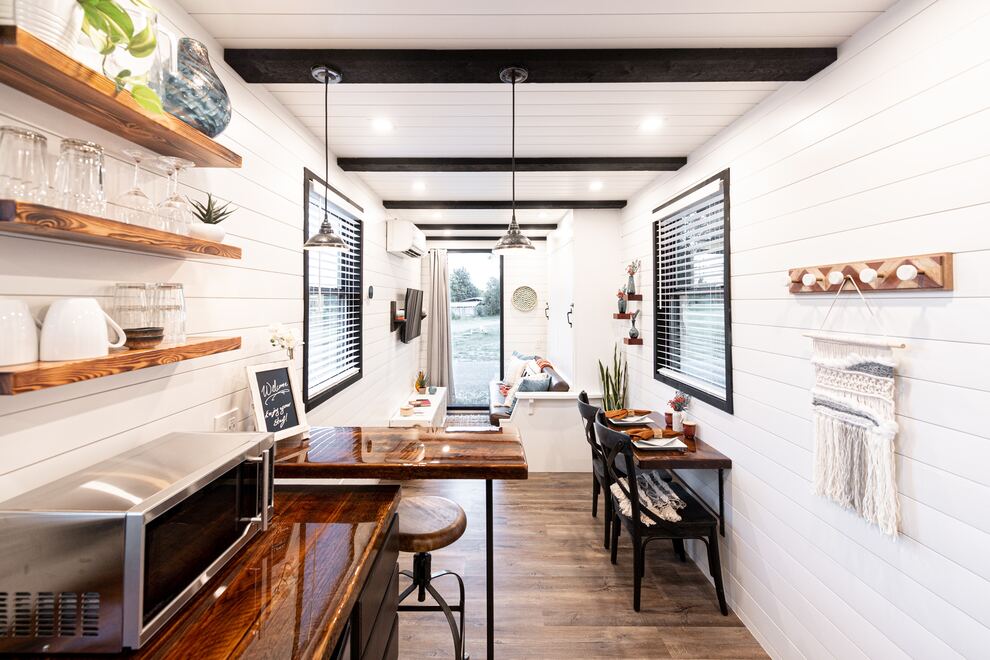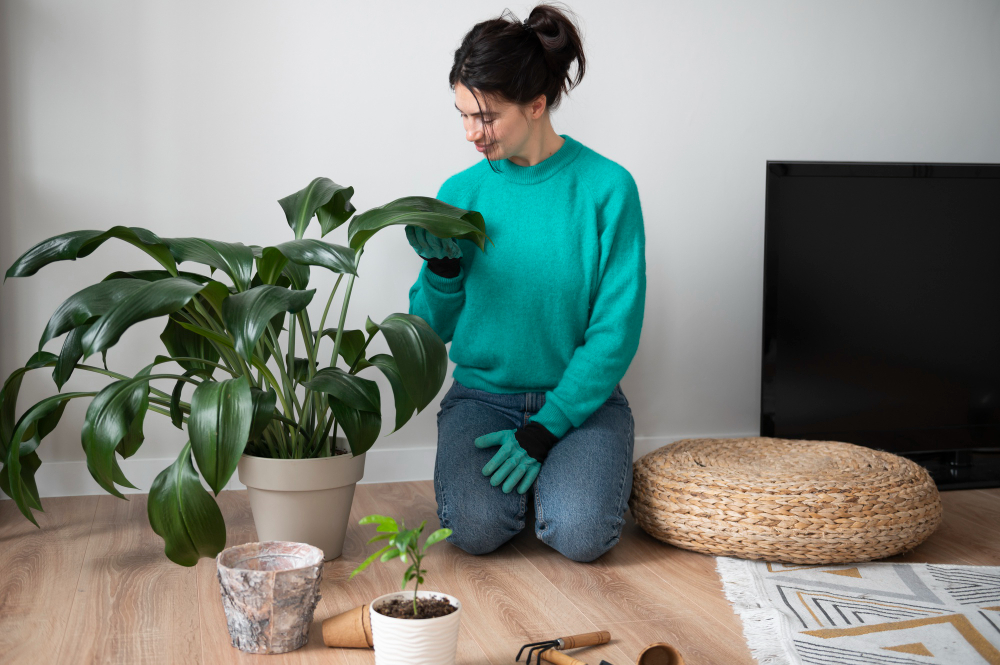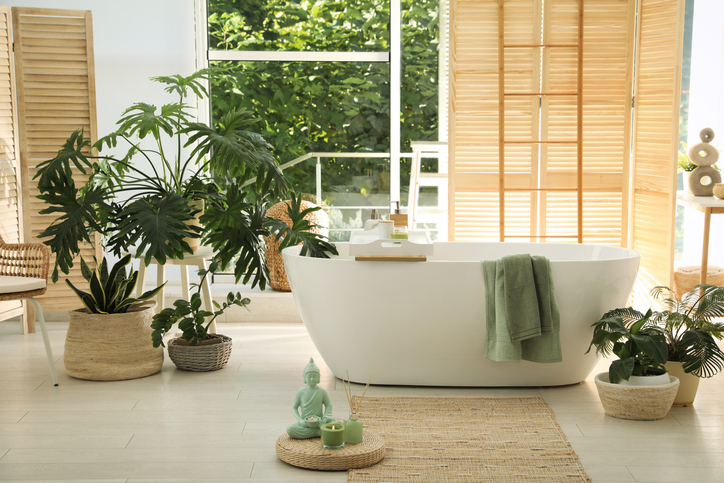Summer is the best time to enjoy the yard, but there are many regions under strict water usage and many homeowners are faced with severely limited irrigation. The thought of water conservation in the yard should extend beyond homes located in desert climates. All homeowners should use best practices when it comes to saving water in the yard. According to National Geographic, “Nearly 60% of a person’s household water footprint can go toward lawn and garden maintenance.” Many homeowners may not even realize how much water they use in the summer. Leaks from a hose or faucet, for example, can waste as much as 3 gallons of water a day.
Regardless of where you live, a general rule of thumb is that plants, including lawns, need about 1″ of water per week. To gauge how much rain or water your yard is receiving, place a sturdy measuring cup in a prominent location and take note of how much water your yard is receiving after a rain or after your sprinklers water the garden. No matter what your particular regional climate is, there are multiple ways every homeowner can conserve water in their yard. We’ve compiled a list of the top water-saving garden tasks for you to consider. With a little planning and design, you can help conserve water while maintaining a beautiful garden.
1. Get to know your garden zones
Every yard has sunny and shady areas. You might even have zones that naturally receive more water runoff than other areas. You can use your natural zones to help determine the best plants for those areas. If you can group plants by their water needs, you’ll have an easier time watering specific areas of your yard rather than the entire property.
2. Xeriscaping
The use of Xeriscaping started in the Southwestern states, places known for their desert landscape. Xeriscaping refers to using plants that are drought tolerant, as well as planting in zones to maximize irrigation. Xeriscape plants can be used to design beautiful landscaping even when there is scarcity of water. A professional landscaper can help design this type of garden plan and significantly reduce water usage.
3. Mulching
Mulch is simply bark dust or another organic material that helps keep moisture locked below the surface. By distributing mulch around the root base of a plant, you’ll prevent water from immediately evaporating. Mulch also helps prevent weeds from developing, which also suck water away from your primary plants. Protecting the roots is really the best way to have a healthy garden.
4. Composting
Composting doesn’t directly lead to water conservation however, compost leads to healthy plants and soil. When the soil is healthy, it will retain water better and the plants will establish themselves faster. Read our tips for the best composting materials and do-it-yourself organic fertilizer recipe here.
5. Plant moss
These bryophytes are low growing and derive the essential nutrients and moisture needed for growth from the air. The ground moss plants serve as a better alternative ground cover for landscaping by giving a smooth and green appearance. They are ideal constituents of shade gardens, as most types of moss plants require shady spots to grow. It can serve as tight fitting cap for rocks, making it an apt choice for rock gardening.
6. Adjust your lawn care
A beautiful stretch of green grass is lovely to look at but it uses a lot of water. There are a few tips for lawn care that can help you save on irrigation. You can reduce the size of your lawn so it covers less area. Adjusting the mower blades to allow for longer blades of grass can actually help lawns hold in more moisture. Water early in the morning or late at night so water doesn’t evaporate. Don’t apply fertilizer in the summer as fast growing grass will require more water.
7. Automatic irrigation systems
Even though the initial cost is high, it can prove to be of great use in the long run. Neither an oscillator nor a hose can discharge precise amounts of water to the roots of the plants. When installed and programmed properly, the automatic irrigation system can serve as one way to conserve water. The targeted watering system will keep the growth of weeds to a minimum and the timer can ensure that plants are watered at the most optimal time of day. However, according to the Massachusetts Water Resources Authority, “Studies have shown that automatic sprinkler systems often use 20% – 30% more water than hand-held hose watering.” Be sure you properly maintain the system so that leaks and overwatering can be avoided.
8. Drip Irrigation
When compared with the installation of traditional sprinkler system, the drip irrigation systems takes less time, effort, and cost. The focused watering system helps to reduce water wastage as the areas to be watered can be targeted. The availability of various fittings makes it easy for you to customize the use of drip irrigation to fit into any of your watering needs. “Drip (or trickle) irrigation can save 30%-70% of the water used by overhead sprinkler systems,” says MWRA.
9. Hand held watering system
This system is essentially a person with a hose. It might sound old fashioned but watering by hand, either by hose or by watering can, is widely regarded as the best way to water the yard. The simple reason is that people can’t generally walk away from their task, and don’t particularly want to water for a long period of time. If you can group water-loving plants together in the same area, you can focus your watering task on one part of the yard and not have to spend even more time watering.
10. Water collection & rain barrels
Collecting rain water from your gutters is a great way to recycle water when your plants really need it. Not only is it incredibly simple, it’s one of the oldest methods of watering, or saving water. The biggest drawback are mosquitos, so choose a well-designed barrel to capture the water and prevent water from evaporating. The system is simple: a hose connects from the lower part of the barrel and gravity pushes the water out.
Top image credit: Jason Lee Design Studio




